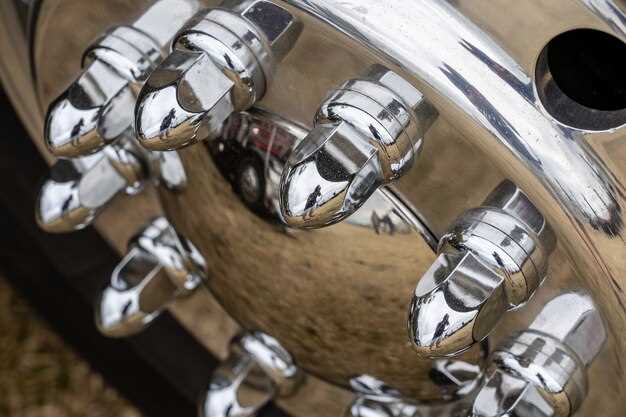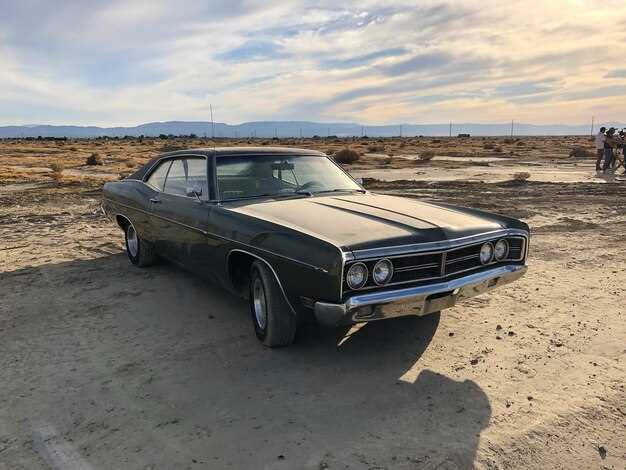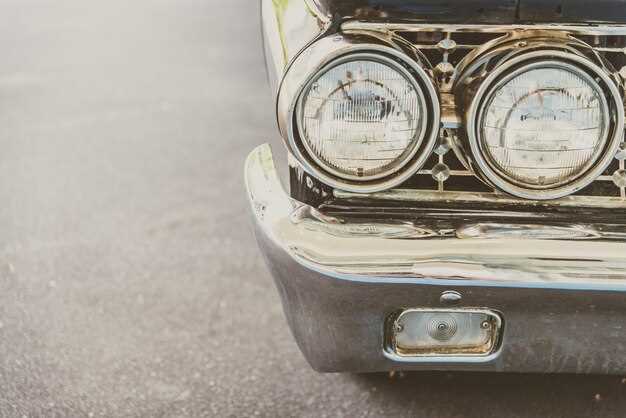
Classic cars hold a special place in the hearts of automotive enthusiasts, combining nostalgia with the thrill of driving. However, to enhance both their performance and aesthetic appeal, upgrading the exhaust system is often essential. The right exhaust system can transform a standard classic car into a powerful machine with a distinctive voice that turns heads on the road.
A high-performance exhaust system not only boosts horsepower and torque but can also improve fuel efficiency, making it a practical upgrade for those who drive their classics regularly. Many classic car owners seek to blend performance enhancements with a stylish appearance, and fortunately, the market offers a variety of options that cater to both needs.
This article explores some of the top classic car exhaust systems available, focusing on their performance benefits and stylish designs. We’ll discuss popular brands and systems that have stood the test of time, ensuring that you have all the information you need to make an informed decision for your classic ride. Whether you’re restoring a vintage muscle car or enhancing a timeless coupe, the right exhaust system can elevate your driving experience to new heights.
Understanding Exhaust System Types and Their Benefits

When it comes to enhancing both performance and aesthetics in classic cars, the exhaust system plays a crucial role. Different types of exhaust systems are designed to meet various performance needs and stylistic preferences. Here are the primary types of exhaust systems and their associated benefits.
The most common type is the Single Exhaust System. This system typically features a single exhaust pipe that runs from the engine to the rear of the vehicle. Its simplicity makes it a cost-effective option, and it is easy to install. While single exhaust systems are generally lighter, they may not provide optimal performance for high-powered engines.
On the other hand, the Dual Exhaust System offers increased performance by allowing exhaust gases to exit the engine through two separate pipes. This configuration improves exhaust flow, reduces back pressure, and can lead to noticeable gains in horsepower and torque. Dual systems can also enhance the sound of the engine, providing a deeper and more aggressive exhaust note.
Another option is the Cat-back Exhaust System, which replaces the exhaust piping from the catalytic converter to the rear of the vehicle. Cat-back systems are popular for performance upgrades as they typically include larger diameter pipes and less restrictive mufflers, resulting in improved airflow. These systems often boost sound quality and can even contribute to minor fuel efficiency improvements.
Header-back Exhaust Systems are another type worth mentioning. These replace the entire exhaust system starting from the engine’s headers to the exit point. Header-back systems are designed to maximize engine performance by utilizing high-flow components. They are ideal for enthusiasts who want significant upgrades and improved performance metrics.
Finally, Performance Mufflers can be added to existing exhaust systems to change sound characteristics and improve flow without replacing the entire system. These mufflers are designed to reduce back pressure while producing a more aggressive sound, offering a blend of performance enhancement and style.
In summary, selecting the right exhaust system type significantly impacts your classic car’s performance, sound, and overall aesthetic. Understanding the differences among single, dual, cat-back, header-back systems, and performance mufflers will help you make an informed choice that aligns with your goals for enhancement and style.
Choosing the Right Material for Your Classic Car Exhaust

Selecting the appropriate material for your classic car exhaust system is crucial for both performance and aesthetics. The most common materials used in exhaust systems are stainless steel, mild steel, and aluminized steel. Each has its own set of advantages and disadvantages that can significantly impact the longevity and effectiveness of your exhaust setup.
Stainless steel is often considered the top choice for exhaust systems due to its excellent resistance to corrosion and heat. This material offers durability that can withstand various weather conditions and harsh environments. Additionally, stainless steel tends to have a polished finish that enhances the overall appearance of your classic car, giving it a sleek and stylish look. It is particularly well-suited for high-performance builds, where longevity and reliability are paramount.
Mild steel is another option, often lauded for its affordability and ease of fabrication. However, it is more susceptible to rust and wear over time, especially in areas with high humidity or where road salt is common. While mild steel can be attractive for budget-conscious restorations, it may require more frequent maintenance and replacement, leading to higher long-term costs.
Aluminized steel is a compromise between the two, featuring a layer of aluminum that offers some protection against rust. It is lighter than stainless steel and more substantial than mild steel, providing decent durability at a moderate price point. While it does not have the same longevity as stainless steel, it is a popular choice for those looking for a balance between cost and performance.
When choosing the right material, consider your driving habits, the climate of your location, and your budget. If you plan to drive your classic car regularly, investing in a stainless steel exhaust system may provide the best long-term value. For occasional use or project builds with a tight budget, mild or aluminized steel may be sufficient. Ultimately, the right choice will enhance both the performance and style of your classic vehicle.
Tuning Your Exhaust System for Optimal Sound and Performance
Tuning your exhaust system is a crucial step in enhancing both the sound and performance of your classic car. Achieving the perfect balance between aesthetics and functionality requires a strategic approach to materials, design, and installation.
Start by evaluating the exhaust layout. The diameter of the pipes plays a significant role in sound and performance. Larger pipes can improve flow and horsepower, but may also lead to a deeper sound. Conversely, smaller pipes typically result in a higher pitch. A custom setup allows you to select diameters that suit both your performance goals and auditory preferences.
Next, consider the muffler type. There are three primary categories: glass-pack, chambered, and turbo. Glass-pack mufflers produce a raw, aggressive sound, ideal for performance enthusiasts. Chambered mufflers offer a more refined tone while maintaining robust performance, and turbo mufflers provide a quieter experience, focusing on reducing back pressure without sacrificing power.
Another crucial element is the exhaust tips. The shape and exit angle of the tips significantly influence the overall sound. Oval and round tips can create different sound profiles, and angled exits can amplify the auditory experience. Choose tips that not only enhance sound but also match the car’s style.
For a personalized touch, consider integrating a resonator into your system. Resonators can modify exhaust notes, reducing unwanted frequencies while enhancing desired tones. Proper placement in the exhaust flow can fine-tune the sound to precisely what you want.
Lastly, installation is critical. Ensure all connections are tight and that the system is free from leaks. An improperly installed exhaust can lead to performance loss and unwanted noise. If you’re unfamiliar with the process, seeking help from a professional can save time and avoid costly mistakes.
By carefully selecting components and paying attention to the details in installation, you can achieve an exhaust system that optimizes both sound and performance for your classic car.
